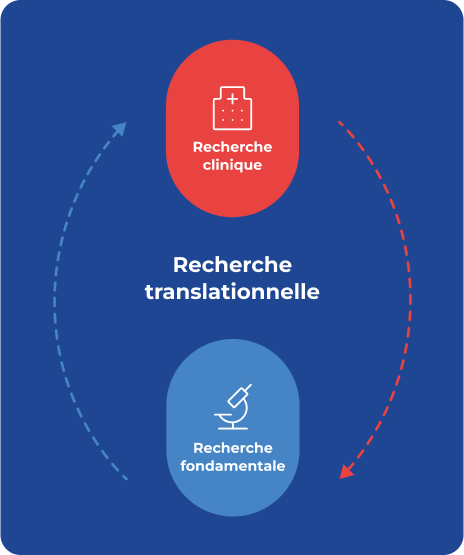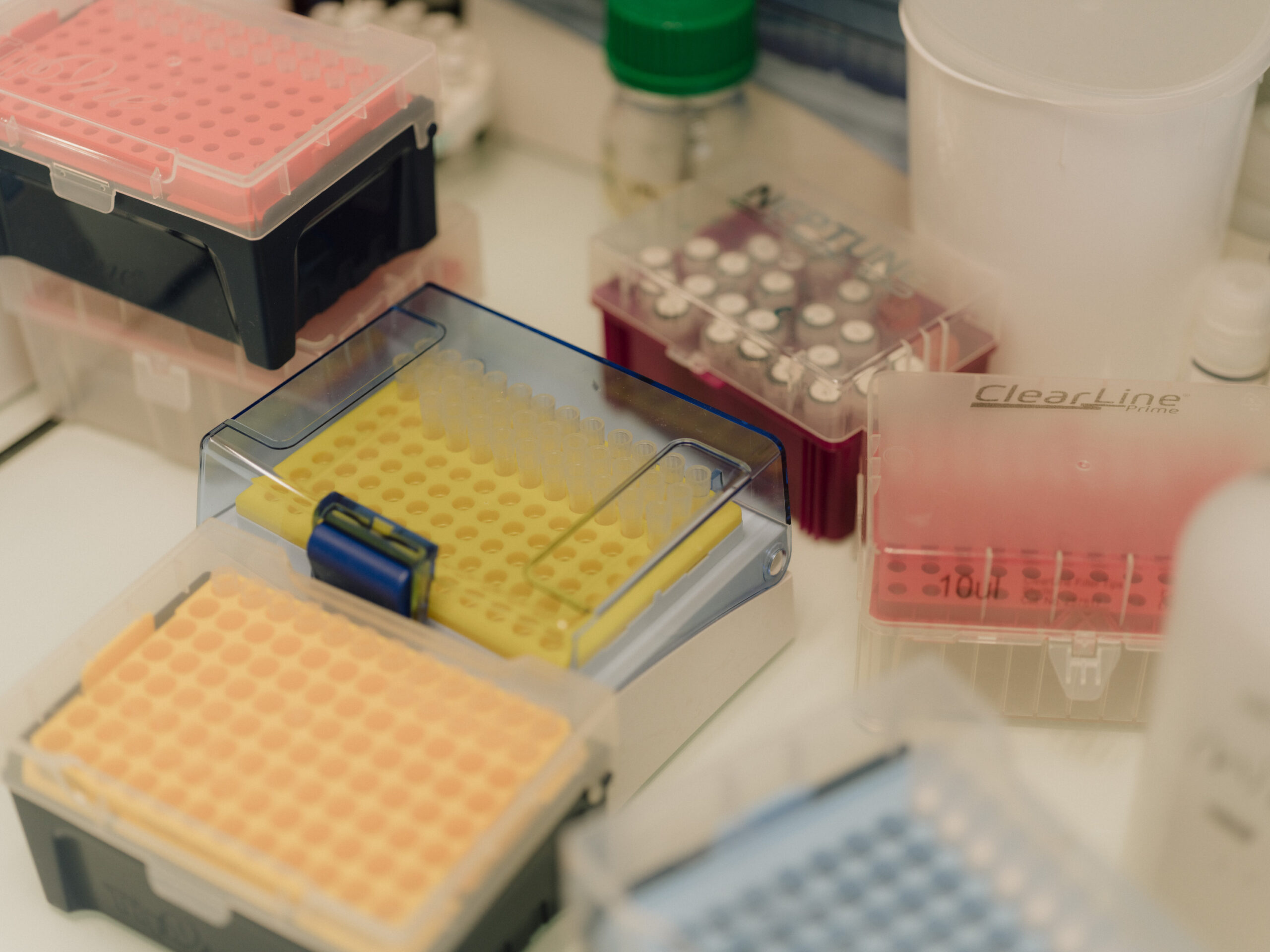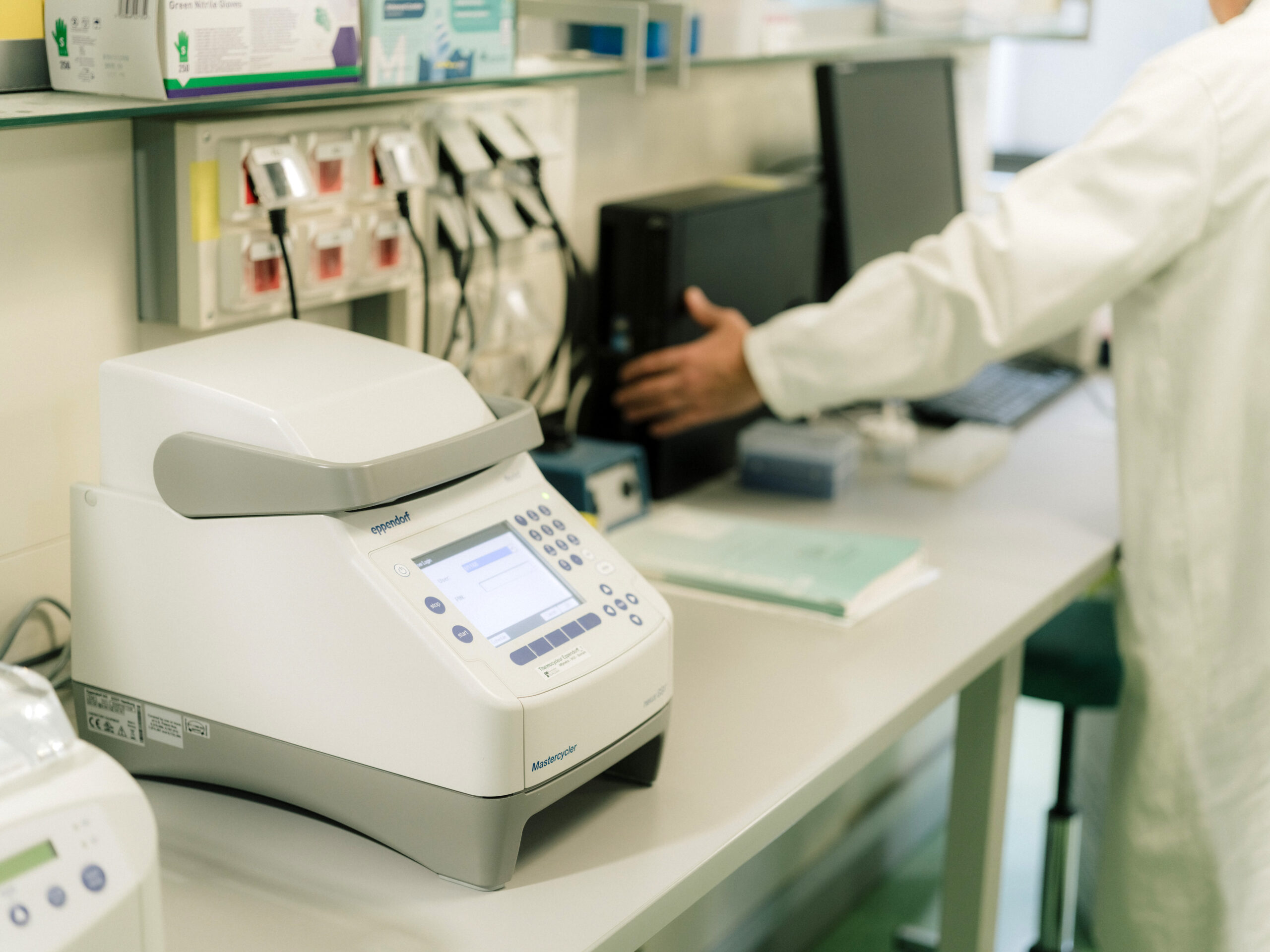- About us
- A new Institute dedicated to combating Leukemia
- Medical-scientific program
- History of Hematology on the Saint-Louis Campus
- Institute Governance
- Press Room
- Contact us
- Our news
- Profile of Valéria Bisio, Research Officer
- Establishment of a Hemato-Oncogenetics Unit
- Profile of Alice Gros, a peer-support patient
- Laureates of the first call for projects of the Leukemia Institute
- Profile of Julien Calvo, researcher
- Support us
- Join us
- You are
- Patients and relatives
- To be cared for and supported
- Become an expert patient
- Discover the Leukemia Institute
- Researchers
- Research
- Clinical trials
- Discover the Leukemia Institute
- Healthcare professionals
- Refer a patient
- Our clinical research
- Discover the Leukemia Institute
- Industry partners
- Discover the Leukemia Institute
- Translational research
- Donors
- Support us
- Discover the Leukemia Institute
- Care
- Patient care
- Being Treated at the Leukemia Institute
- Anti-cancer Treatments
- Supportive Care
- Open Multidisciplinary Meetings
- Our clinical services
- Department of clinical hematology
- Department of adult hematology
- Hematology Transplant Unit
- Department of Pharmacology and Clinical Investigations
- Department of clinical hematology and cell therapy
- Adolescent and Young Adult Unit
- Outpatient Hemato-oncogenetics Unit
- Department of senior hematology
- Department of pediatric hematology and immunology
- Our medical laboratories
- Hematology Medical Laboratory, Michaela Fontenay
- Hematology Medical Laboratory, Jean Soulier
- Molecular Genetics Unit, Hélène Cavé
- Hematology Medical Laboratory, Vahid Asnafi
- Patient Information
- Acute Myeloid Leukemias
- Acute Lymphoblastic Leukemias
- Myeloproliferative Neoplasms
- Myelodysplastic Syndrome
- Anti-cancer Treatments
- Supportive Care
- Psychological Support
- Research
- Our research teams
- Molecular pathology
- Functional precision medicine for leukemia
- Normal and pathological hematopoiesis
- Niche, Cancer, and Radiation in Hematopoiesis
- Population Evolution and Interaction Particle Systems
- Translational Immunology in Immunotherapy and Hematology (TIGITH)
- Identification and targeting of extrinsic regulators of myeloid malignancies
- Lymphoid niches, Chemokines and Immuno-hematological syndromes
- Molecular Mechanisms of Acute Myeloid Leukemia Development
- Chronic Myeloid Malignancies, Microenvironment & Translational Research
- Leukemia & Niche Dynamics
- Genetic and Epigenetic control of Normal and Malignant Hematopoiesis
- Stem cell dysfunction and secondary AML
- Biostatistics and clinical epidemiology
- Our technological platforms
- Our clinical research
Accueil A new Institute dedicated to combating Leukemia Medical-scientific programMedical-scientific program
...Four missions of the Leukemia Institute
Our goals
Cure leukemia at all stages of life
1 Identify predisposing factors for leukemia and provide preventive treatment
2 Understand the heterogeneity of leukemias and develop innovative treatments
3 Explore the mechanisms of treatment resistance
4 Improve patients’ quality of life
Our research areas
Axis 1: MECHANISMS
Basic biology
-
Decipher the heterogeneity of leukemias using a multi-omics approach
-
Identify intrinsic vulnerabilities of leukemias
-
Explore the cellular consequences of therapeutic stresses
Axis 2: MICROENVIRONMENT
Stem cells and microenvironment
-
Study cellular interactions between leukemic cells, stroma, and immune effectors
-
Explore the cellular consequences of therapeutic stresses
Axis 3: PRECISION
Therapeutic agents and combinations
- Tester des traitements innovants sur des cellules primaires ou sur des modèles pré-cliniques
- Identifier des combinaisons de traitements prometteuses et valider des biomarqueurs
Axis 4: PREDISPOSITION
Prevention and precision medicine
-
Identify patients with germline predisposing conditions
-
Conduct longitudinal somatic studies
Axis 5: TRIALS
Early clinical trials
-
Develop innovative trials for precision medicine
-
Integrate biological data into clinical trials
Axis 6: CARE
Improving care pathways
-
Implement a post-treatment follow-up program
-
Explore quality of life measures in collaboration with patient associations
Our research projects
Adaptive somatic genetic rescue in Fanconi anemia
Lise Larcher
Pathogenesis of secondary leukemias
Marie de Tersant
JAK inhibition intrinsic and extrinsic effects in skin cancer
JAK inhibition results in increased risk of skin cancer through MAPK pathway activation, while positively remodelling the tumor immune microenvironment to create new therapeutic avenues in combination with immune checkpoint inhibitors
Hélène Pasquer
Host foundation and founding members
Frequently Asked Questions
Yes, leukemia is a type of blood cancer. More precisely, it is a cancer that affects the bone marrow, the organ inside the bones responsible for producing blood cells (red blood cells, white blood cells, and platelets).
In leukemia, certain blood cells develop abnormally and uncontrollably. These leukemic cells gradually invade the blood and bone marrow, preventing the normal production of other blood cells. This can lead to symptoms such as fatigue, frequent infections, or bleeding.
- Basic research: This is research conducted in the laboratory, often on cells, genes, or animals. Its goal is to better understand the biological mechanisms of leukemia.
- Translational research: This bridges basic research and patient care, applying laboratory findings to develop new treatments or approaches for patients.
- Clinical research: This research is conducted with patients, often through clinical trials. It allows testing new treatments, drugs, or diagnostic methods to determine if they are effective and safe.
A stem cell is an immature cell capable of transforming into different types of specialized cells in the body. They can be compared to “base cells,” similar to seeds that can grow into different plants.
In the context of blood, we talk about hematopoietic stem cells, which are found in the bone marrow. They have the ability to produce:
-
Red blood cells (which carry oxygen)
-
White blood cells (which defend against infections)
-
Platelets (which help blood clot)
These cells play an essential role, particularly in the treatment of certain leukemias, such as bone marrow transplantation, which involves replacing diseased cells with healthy cells from a donor.
Follow our actions by subscribing to the institute's newsletter
- Discover the Leukemia Institute
- Translational research
- Our clinical research
- Clinical trials
- Become an expert patient
- To be cared for and supported
- A new Institute dedicated to combating Leukemia














Categories of the Institute’s internal call for projects
This category aims to support projects with high potential that are still at an early stage. It provides funding for exploratory work requiring initial support to generate proof-of-concept data, often essential for accessing more conventional funding. This mechanism offers maximum flexibility, with rolling submissions and a budget of up to €30,000 per project.
This category encourages collaboration between multiple teams, notably between basic and clinical research, in order to promote integrated approaches.
This category supports early studies, such as phase I trials or drug repurposing projects, specifically targeting needs not covered by other funding sources.
This category is aimed at projects with high commercialization potential, including possible patent filing or industrial partnership.